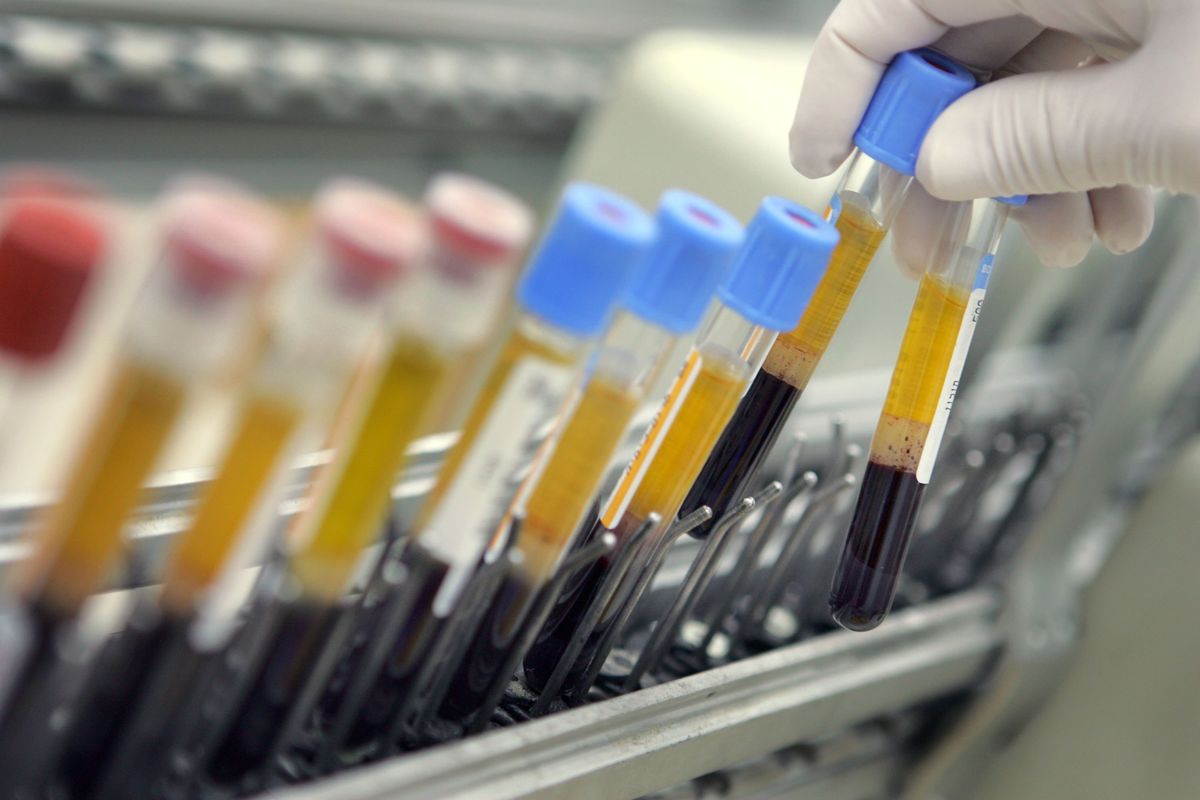Trump: Slash the health research budget. Congress: No.
/cdn0.vox-cdn.com/uploads/chorus_image/image/54558491/56646485.0.jpg)
Budget appropriators have rejected Trump’s vision for a slimmer NIH — at least for now.Photo by David Silverman/Getty Images
It has been a jittery couple of months for the health research community, as the Trump administration has been casting about for spending to cut from the federal budget. In March, the White House threatened the National Institutes of Health with a $1.2 billion budget cut this year, followed by another $5.8 billion cut in 2018.
Some of that anxiety was just allayed — at least temporarily. In an agreement reached Sunday night, congressional negotiators said no to Trump’s 2017 visions for NIH. Instead, they opted to increase the agency’s budget by $2 billion (or 6 percent) for the second year in a row as part of a $1 trillion spending agreement that keeps the government going through September.
This is very good news for medical research in this country. It means the current set of lawmakers are carrying on with a longstanding tradition of bipartisan support for the NIH. It also means Congress wants to make good on the promise of the 21st Century Cures Act, a bipartisan law that aims to advance medical research and innovation though new funding and raised the NIH budget by $4.8 billion over 10 years.
As Axios’s David Nather reported, top Republican appropriators, including Sen. Roy Blunt and Rep. Tom Cole, had pushed for the NIH funding increase — but it wasn’t clear whether they’d listen to Office of Management and Budget Director Mick Mulvaney and change their minds.
They clearly didn’t. And the fact that lawmakers not only rejected the Trump administration’s proposals but also gave the NIH a funding boost means we might not see the NIH gutting in 2018 that the Trump administration has been aiming for.
As House Minority Leader Nancy Pelosi said in a statement, “The omnibus [spending bill] is in sharp contrast to President Trump’s dangerous plans to steal billions from lifesaving research.”
Here are some of the things the $2 billion increase will buy NIH:
- A $650 million (or 430 percent) increase to fight opioid abuse
- A $400 million increase for Alzheimer’s disease research
- A $475.8 million boost for the National Cancer Institute
- Funding increases for two of President Barack Obama’s signature health initiatives (which were also part of the 21st Century Cures act): a $120 million boost for the Precision Medicine Initiative and a $110 million increase for the BRAIN Initiative to map the human brain
- A $50 million increase to combat antibiotic-resistant bacteria
- “Increases to every Institute and Center to continue investments in innovative research to advance fundamental knowledge and speed the development of new therapies, diagnostics, and preventive measures to improve the health of all Americans.”
Why NIH escapes partisanship: it’s good for business
NIH funding hasn’t typically been a partisan issue. That’s probably because the NIH delivers benefits to people on both sides of the aisle, such as medical innovations and jobs.
Researchers have found NIH funding “buys” us new patents for drugs, medical devices, and other technologies — and spurs the creation of new biotech firms.
In March, Science published a study looking at the impact of NIH grants over a 27-year period. The main finding: 8.4 percent of all NIH grants go on to generate patents — for new drugs, medical devices, or other medicine-related technologies.
The authors of the Science paper had previously figured out that “a $10 million boost in NIH funding leads to a net increase of 2.3 patents.” They estimate, roughly, that each patent is worth around $11.2 million in 2010 dollars. “A back-of-the-envelope calculation indicate that a $10 million dollar increase in NIH funding would yield $34.7 million in firm market value,” they reported in a recent NBER paper. Not a bad bet.
The Science paper’s secondary finding is perhaps just as important: Grant money also has a carryover effect into the private sector. Around 30 percent of all scientific papers generated by NIH grants are cited by successful patent applications from private firms.
This means that even if a grant isn’t directly generating a patent, it has a good chance of aiding the thinking behind the discovery of another.
There’s also research that suggests government funding is better at kick-starting this virtuous cycle than private sector funding: NIH-funded patents are cited by future patents at double the rate of those developed by the private sectors, a 2014 Nature Biotechnologypaper found.
What to look for in the coming weeks
Despite this bit of good news, the future of science funding is still in a state of uncertainty. We’ll have a better picture of what to expect for next year when the Trump administration releases a full budget request this month. In that document, we’ll see what funds will be allocated for the National Science Foundation, for instance. And we’ll see where priorities are shifting in individual departments. How will changes at NIH effect research for individual diseases like Alzheimer’s, diabetes, or cancer in 2018? We don’t yet now.
Overall, the Trump administration is seeking to cut 10 percent of the nation’s non-defense discretionary spending. The hard truth is that even if these proposed reductions don’t make it through Congress, any reduction in discretionary spending is likely to cut into science. (One source of potential optimism: The Department of Defense, which Trump hopes to bolster, is also a major funder of university research.)
Whatever Trump proposes is going to have to pass Congress, though. And, again, there’s a good chance deep cuts simply won’t make it through.
[“Source-vox”]




